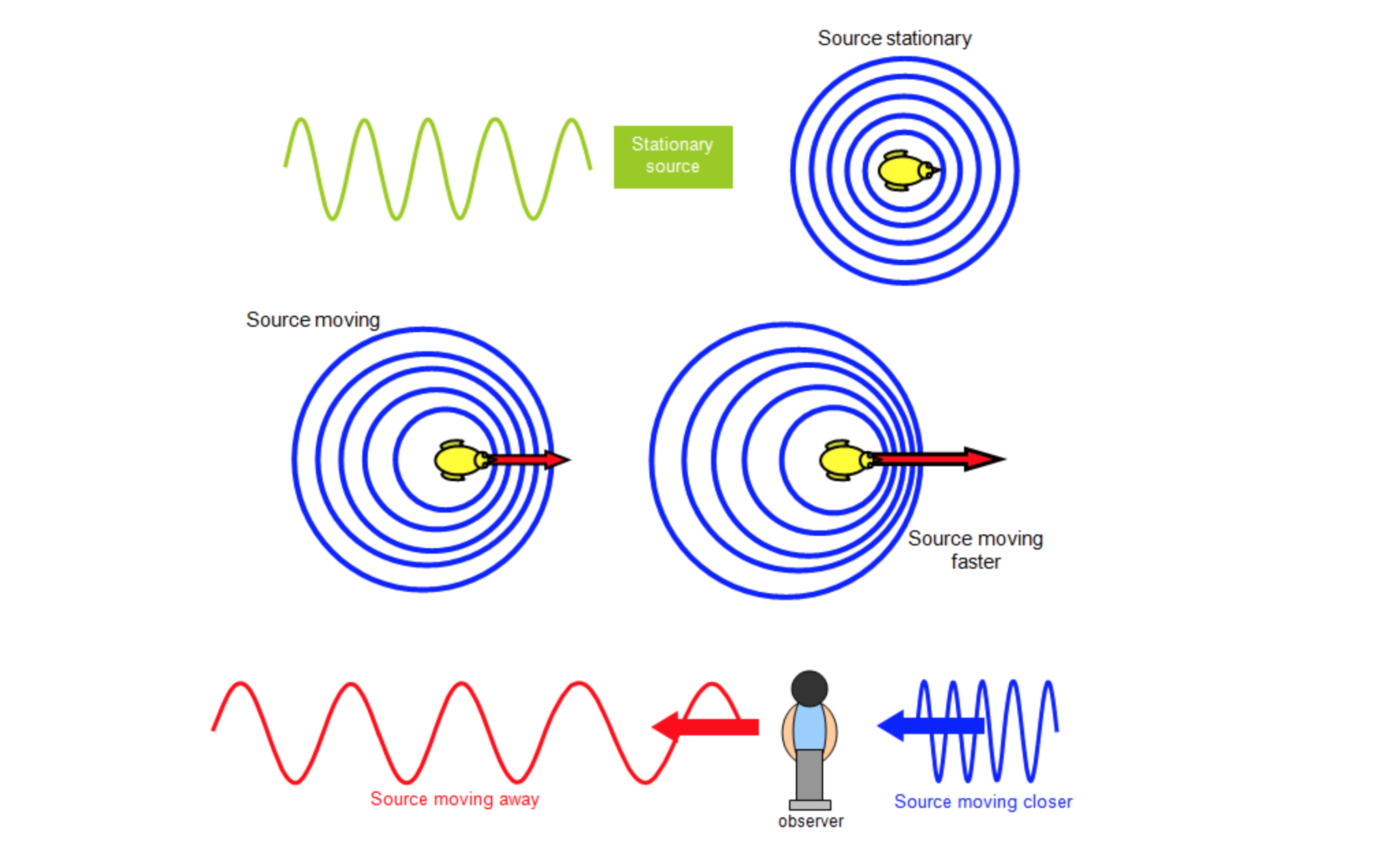Noise in Motion: The Doppler effect and its Applications
Have you ever stood at the side of the road as a police car or fire truck drove past you with its sirens on? If you have, you may have discovered that when the car or truck is approaching you, the siren sounds faster and higher in pitch. In the same way, when the vehicle moves away from you, the siren is slower and lower in pitch. This phenomenon that you have experienced is called the Doppler Effect. According to the Doppler Effect, a noise sounds different when it moves toward versus away from a stationary observer. But why does this happen?
To understand this strange occurrence, we must first cover the basics of sound waves. Sound is made of vibrations called sound waves. These “waves” are just what the word implies: they continuously go up and down just like the waves of the ocean. When a noisy object, such as a fire truck or a car using its horn, is moving toward a person, the frequency of the sound waves, or the rate at which the sound waves reach you, increases. If you were to look at the sound waves as they are moving towards you, they would look scrunched together with little space in between. Therefore, when a noise is coming towards an object, the frequency of the sound waves is higher than when it is moving away from the object. This higher frequency is what causes us to hear a higher pitch and a faster siren when it is coming toward us. Likewise, if a noisy object is moving away from us, the frequency of the sound waves is lower, thus causing the sound to seem lower in pitch and slower for us.
The Doppler Effect has many applications that have helped increase our knowledge on the universe and its galaxies. In fact, the Doppler Effect has helped scientists and researchers approximate the age of the universe - 13.8 billion years! As time passes, we will continue to learn more and more about the universe and our galaxy through the Doppler Effect. Maybe one day, you can contribute to important discoveries that may change our perception of the universe, just like the Doppler Effect has done.
Doppler Effect
Picture Source: Schoolphysics.co.uk

